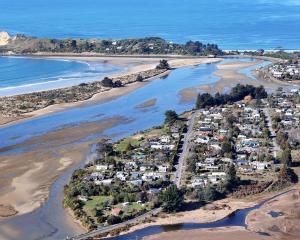
Niwa forecasting principal scientist Chris Brandolino said the next three months were expected to be warmer and drier than usual for much of Otago and Southland.
Temperatures on the West Coast, Southland and inland Otago were "very likely" to be above average, he said.
The La Nina weather pattern had continued during January, but it was gradually weakening, Mr Brandolino said.
"It will continue to affect Aotearoa New Zealand’s atmospheric patterns in coming months, even as neutral conditions are likely reached in early autumn.
"Air pressure is forecast to be higher than normal over and to the south of the South Island, and lower than normal north of the country.
"This is expected to be associated with an easterly quarter air flow anomaly for the season as a whole."
Coastal sea surface temperatures (SSTs) had ranged from 0.7degC to 3.2degC above average during January, and a Tasman Sea marine heatwave reached record levels along the coastal western South Island, he said.
"More easterly-quarter winds and marine heatwave conditions will result in high heat and humidity at times."
Rainfall in the regions was equally likely to be near normal or below normal.
"The odds for a drier than normal three-month period are reduced when compared to last month, aligned with a gradual easing of La Nina."
Soil moisture levels were most likely to be below normal and river flows were equally likely to be near normal or below normal.
In coastal Otago, temperatures were equally likely to be near average or above average, he said.
"For the three months as a whole, more frequent onshore winds and marine heatwave conditions may contribute to more cloud cover, higher humidity, and warmer overnight temperatures, but also lead to cooler daytime temperatures," he said.
"Rainfall totals are most likely to be near normal.
"Anticyclones, or high pressure, over parts of the country may continue to increase the risk for dry spells, particularly in the southern half of the region.
"However, more frequent onshore winds may lead to more wet days (more than 1mm of rainfall) than normal.
"Soil moisture levels and river flows are about equally likely to be near normal or below normal," he said.












